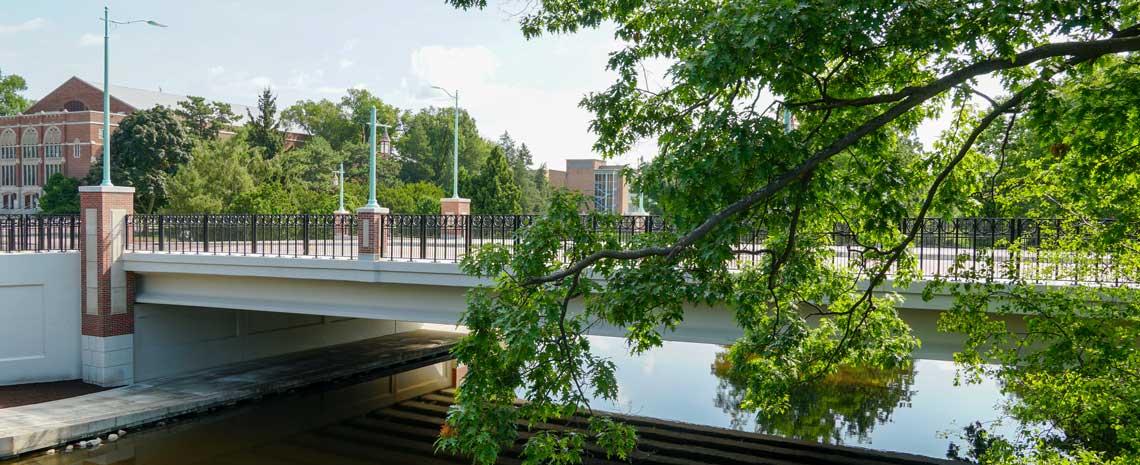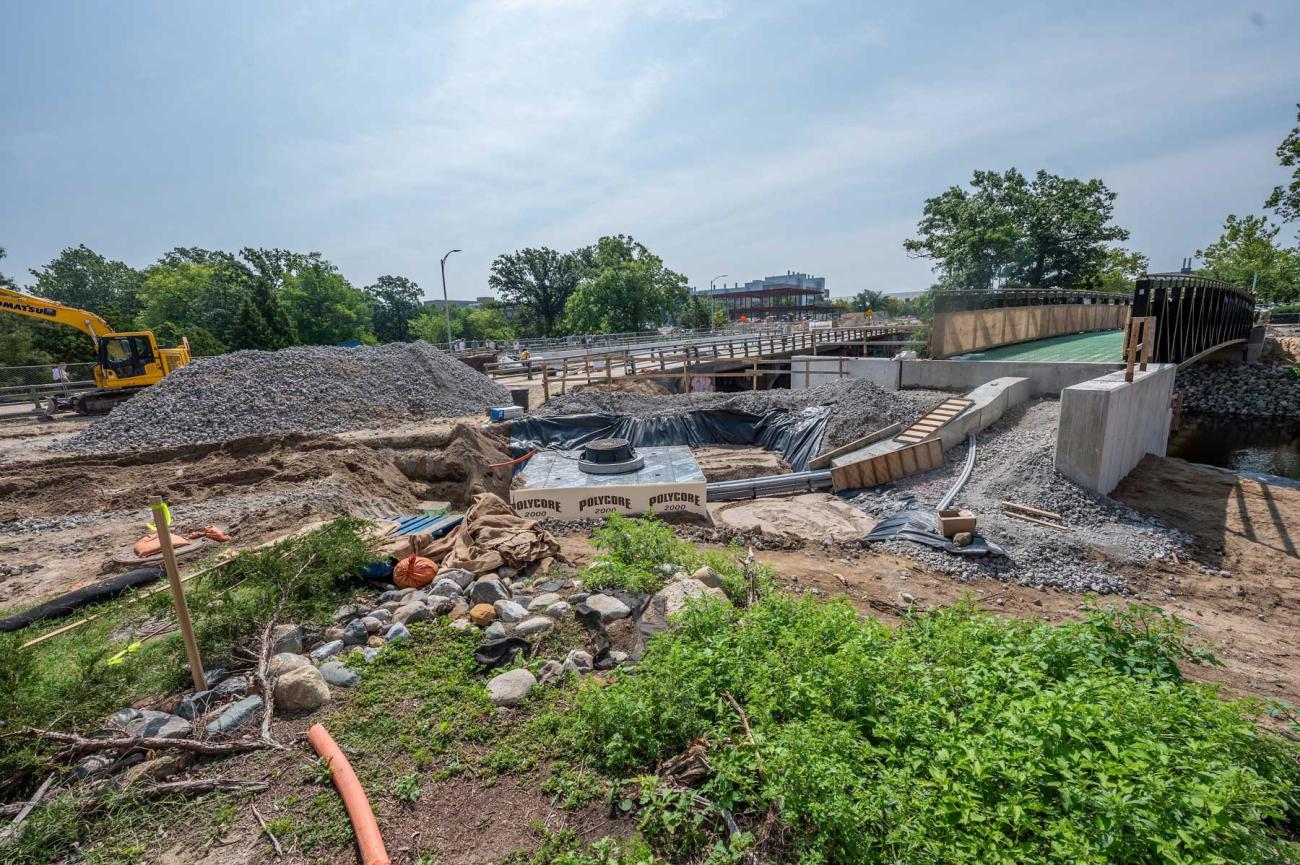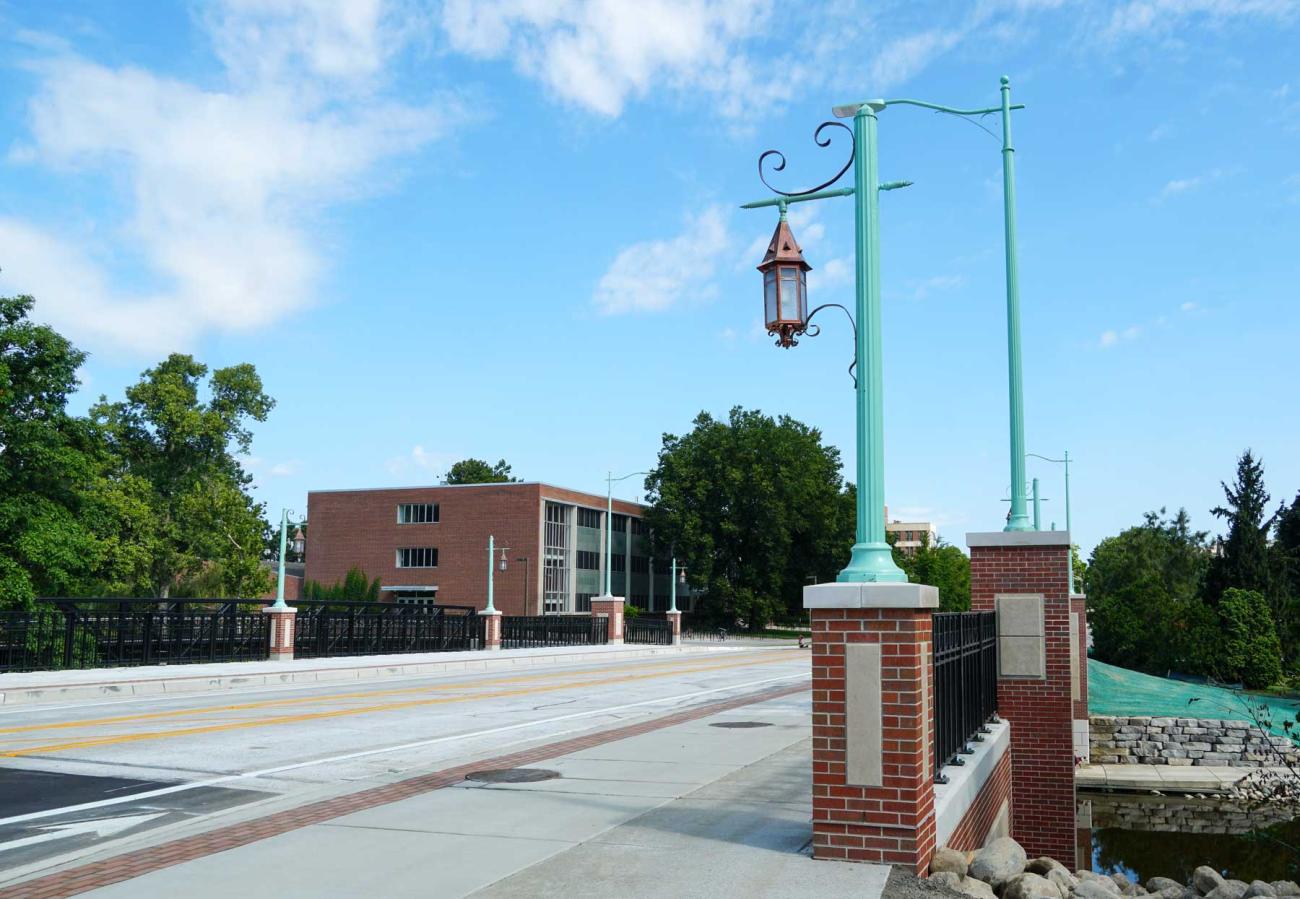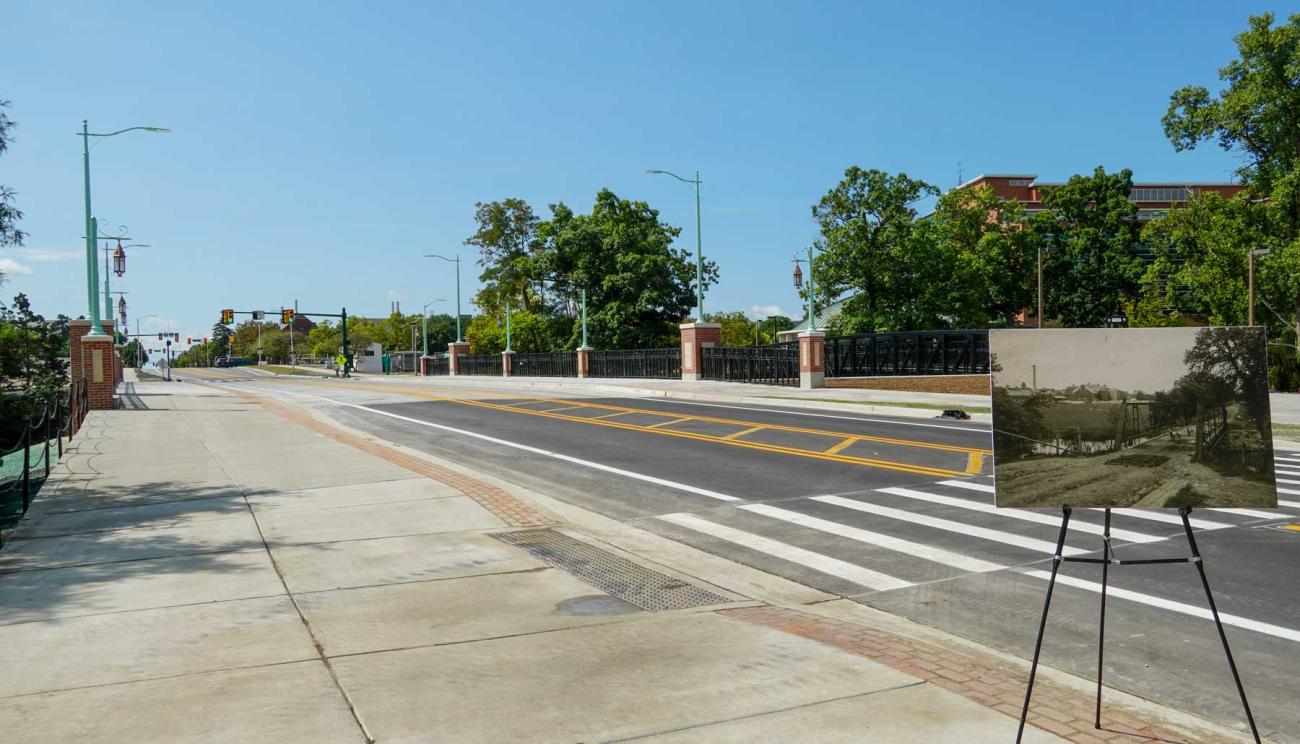New Farm Lane Bridge opens for fall semester

Danielle Fowler
August 16, 2024
Time lapse recap of the rebuild.
From its humble beginnings as a simple crossing to its current status as a modern, multi-functional bridge, the Farm Lane Bridge is more than just a structure; it’s a new landmark that now sits at the heart of campus.
This historical Red Cedar River crossing has a rich history reflecting MSU’s growth from the original bridge, to the previous bridge’s construction in the 1930s, to present day.
Centrally located on Farm Lane, a major north-south thoroughfare, the bridge has undergone several transformations since its inception. Through late 2023 and the spring and summer of 2024, the existing bridge was demolished and two new bridges were built in its place.
Early beginnings and the impetus for change
The original Farm Lane Bridge was constructed in 1936 to address the increasing traffic and transportation demands on campus. The bridge was initially a simple, functional structure designed to allow vehicles and pedestrians (and livestock) to cross the Red Cedar River.

Today, the Farm Lane Bridge is heavily used by pedestrians, bicycles and vehicles, carrying 12,000 vehicles and 7,000 pedestrians during a typical class day. It’s also the only campus bridge over the Red Cedar River with a road surface above the 100-year floodplain.
Since its original construction the bridge has been updated, but safety inspections in 2019 and 2021 resulted in the bridge's weight limits being reduced. The easternmost traffic lane on the bridge was closed in 2021, and it was clear that major work was necessary to keep the bridge functional and safe for Spartans and visitors. In response, MSU undertook a major reconstruction project to replace the aging bridge with a new, modern structure.
“Reconstructing the Farm Lane Bridge was vital to ensuring the safety of Spartans,” says MSU’s Infrastructure Planning and Facilities (IPF) vice president Dan Bollman. “We needed to act now before further deterioration resulted in unplanned closures and more costly work.”
The challenges of constructing a new crossing
The Farm Lane Bridge is more than just a traffic crossing: multiple essential utilities run through the bridge including steam, water, electricity, and communications. All of these utilities had to be accounted for before the old bridge was demolished so services would remain uninterrupted on campus.
In the spring and summer of 2023, a bypass was bored under the river from bank to bank to allow for utility bypasses to be installed. MSU IT’s work began in the winter of 2023 when teams pulled a bypass fiber optic network under the Red Cedar River and moved services from the bridge.
“By design, when an MSU IT project is successful, you don’t see any impact,” said Scott Bryan, program manager for MSU IT infrastructure initiatives. “We did all of this work without affecting services because of the many years of engineering and design that went into this level of redundancy.”
In addition to rerouting utilities, the Farm Lane Bridge project team needed to ensure continuity of campus operations while work was being done. The project timeline was designed to minimize disruption for Spartans as much as possible.

“We couldn’t just build the bridge over two summers; we knew we were going to interrupt a semester,” says Andy Linebaugh, project manager with IPF. A study conducted by the team made it clear that rerouting pedestrian traffic to nearby river crossings would’ve had a significant impact in pedestrian travel time across the campus.
“Logistics and detours are a massive consideration,” says Linebaugh. “Students needed to be able to get to their classes on time during construction, so we built the pedestrian bridge in that first summer.”
The new pedestrian bridge, thirty yards west of the main bridge, allowed foot and bike traffic to cross the river while construction was completed.
The project planners also had to consider the ecology of the Red Cedar River and worked closely with the Michigan Department of Natural Resources (DNR) to protect the river and its banks. “The mussels in the riverbed had to be relocated between June and October, soil erosion and sedimentation controls needed to be put in place, work in the waterway was prohibited from March to June because the pike were spawning,” offers Linebaugh as examples. “You consider these types of restrictions first, then plan how to construct around them.”
“The Red Cedar River is one of this campus’s greatest assets,” says Bollman. “Thoughtfully constructing sustainable crossings like this new bridge will enable us to appreciate and enjoy it for years to come.”
A fresh design with connections to the past
The newly rebuilt Farm Lane Bridge and its companion pedestrian bridge are more than just functional crossings.
Design elements for the bridge are taken both from the Farm Lane corridor to the south and from MSU’s historical north campus. Masonry, limestone, concrete coating and other finishes tie in with those of neighboring buildings like the Auditorium. The black iron guardrails that line the bridge mirror those on the Farm Lane railroad underpass to the south, close to the Surplus Store and Recycling Center.
The bridge also features the iconic brass lanterns that can be seen across campus. The lanterns were handcrafted in IPF’s Metal Shop using a design that was reverse-engineered from existing fixtures, and feature more sustainable, upgraded LED lighting.

A lasting legacy
The new bridge, seated neatly between Erickson Hall, the International Center, the Auditorium and the soon-to-be-completed Multicultural Center, was officially opened in a ribbon cutting ceremony on August 12 in anticipation of a busy fall semester.
The effort was a massive one, shared between Spartans and community partners.
“It’s hard to think of a shop in IPF that wasn’t involved in the Farm Lane Bridge project,” says Linebaugh. “It was an all-in effort, from plumbing to security to landscape to our street lighting crew, paint, outside distribution, the list goes on.”
The significance of a structure like the new Farm Lane Bridge is not lost on its architects. It will stand as a legacy for past, current and future Spartans as they traverse the Red Cedar River through the heart of campus.
“Bridges are there for decades,” says Linebaugh. “As long as we’re around we’ll be able to look at it and be proud of our involvement.”

